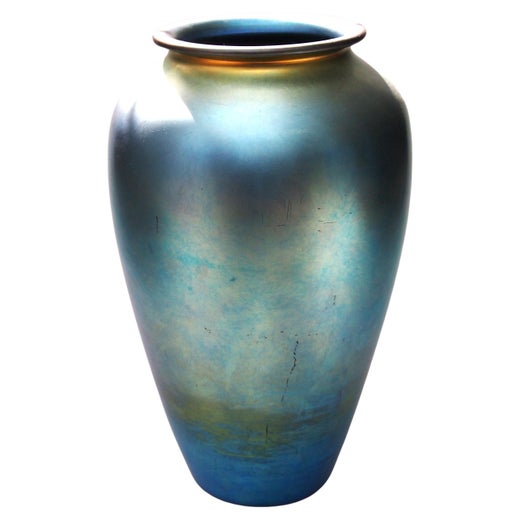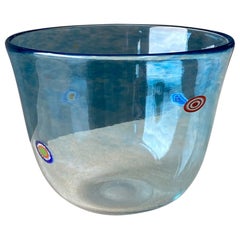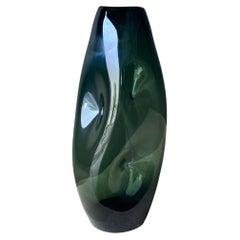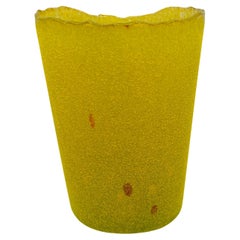Art Nouveau Steuben Gold Aurene Heart & Vine Glass Vase
About the Item
- Creator:Steuben Glass (Designer)
- Dimensions:Height: 6.25 in (15.88 cm)Width: 3 in (7.62 cm)Depth: 3 in (7.62 cm)
- Style:Art Nouveau (Of the Period)
- Materials and Techniques:
- Place of Origin:
- Period:
- Date of Manufacture:1925
- Condition:Wear consistent with age and use.
- Seller Location:San Juan Capistrano, CA
- Reference Number:1stDibs: LU5767242878482
Steuben Glass
Steuben Glass Works is the most illustrious name in American art glass. Its vividly colored Art Nouveau and Asian-style wares produced in the early 20th century as well as later modernist works rendered in flawlessly clear crystal are objects of striking beauty and delicacy.
The Steuben Glass Works was cofounded in 1903 in the town of Corning, New York, by Frederick Carder, an alum of celebrated British glassmaker Stevens & Williams and a self-taught English chemist and glassmaker. Carder was a restless experimenter, constantly creating new color formulas that resulted in a wide array of hues, from milky jades to his iridescent Aurene shades. A favorite Carder technique was to acid-etch decorative patterns into pieces made of glass layered in different colors. The forms of his vessels were relatively conservative. Most are based on classic Chinese pottery; many display the flowing, naturalistic lines of the Art Nouveau period.
The larger local firm Corning Glass acquired Steuben in 1918. The company’s approach to art glass changed radically in the early 1930s, when Corning chemists devised a new type of crystal known as 10M, with perfect clarity and brilliant refractive powers. Corning decided that, henceforth, all Steuben decorative objects, vases, sculptures and other wares would be made from the crystal.
Art glass was made in two formats: molded and polished abstract sculptures and figurines, or pieces for which artists used Steuben crystal as a sort of canvas. The first such artwork was sculptor Stanley Waugh’s 1935 Gazelle Bowl, a vessel etched with brawny Art Deco animal forms. In later years, Steuben would invite artists that included Henri Matisse, Georgia O’Keeffe and Isamu Noguchi to “paint” in the firm’s crystal.
Steuben glass comes in myriad forms and is available in a broad range of price points. Jewel-toned glasses and tableware from the Carder era include candlesticks marked at $300 and full dinner services for more than $10,000. Small crystal figurines bring around $1,000, while larger sculptures are priced in the neighborhood of $7,000.
Steuben glass, with its impeccable artistry and timeless grace, deserves a place in any collection.
Find antique Steuben glass and other furniture on 1stDibs.
You May Also Like
Early 20th Century American Arts and Crafts Vases
Art Glass
Vintage 1930s American Art Deco Vases
Art Glass
Vintage 1920s American Art Deco Bottles
Art Glass
Early 20th Century Art Nouveau Glass
Glass
Early 20th Century American Arts and Crafts Decorative Bowls
Art Glass
Vintage 1910s American Art Nouveau Bottles
Sterling Silver
Early 20th Century American Art Nouveau Vases
Glass
Late 20th Century American Modern Vases
Glass
Vintage 1930s American Art Deco Vases
Art Glass
Vintage 1910s American Art Nouveau Bottles
Sterling Silver
More From This Seller
View All1990s American Post-Modern Vases
Murano Glass
20th Century American Mid-Century Modern Vases
Glass, Art Glass
20th Century American Mid-Century Modern Vases
Art Glass, Glass
Vintage 1980s Swedish Mid-Century Modern Vases
Art Glass
Vintage 1970s Norwegian Scandinavian Modern Vases
Art Glass
Mid-20th Century Mid-Century Modern Bottles
Art Glass, Blown Glass




